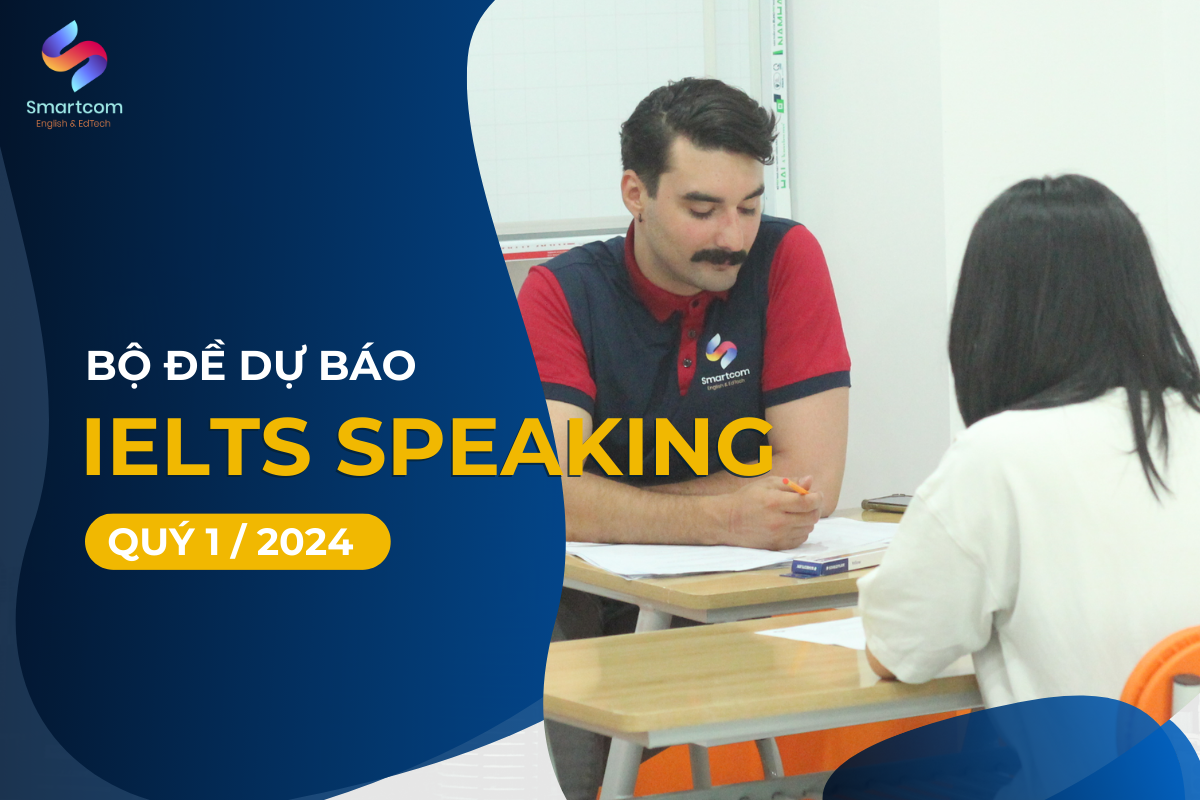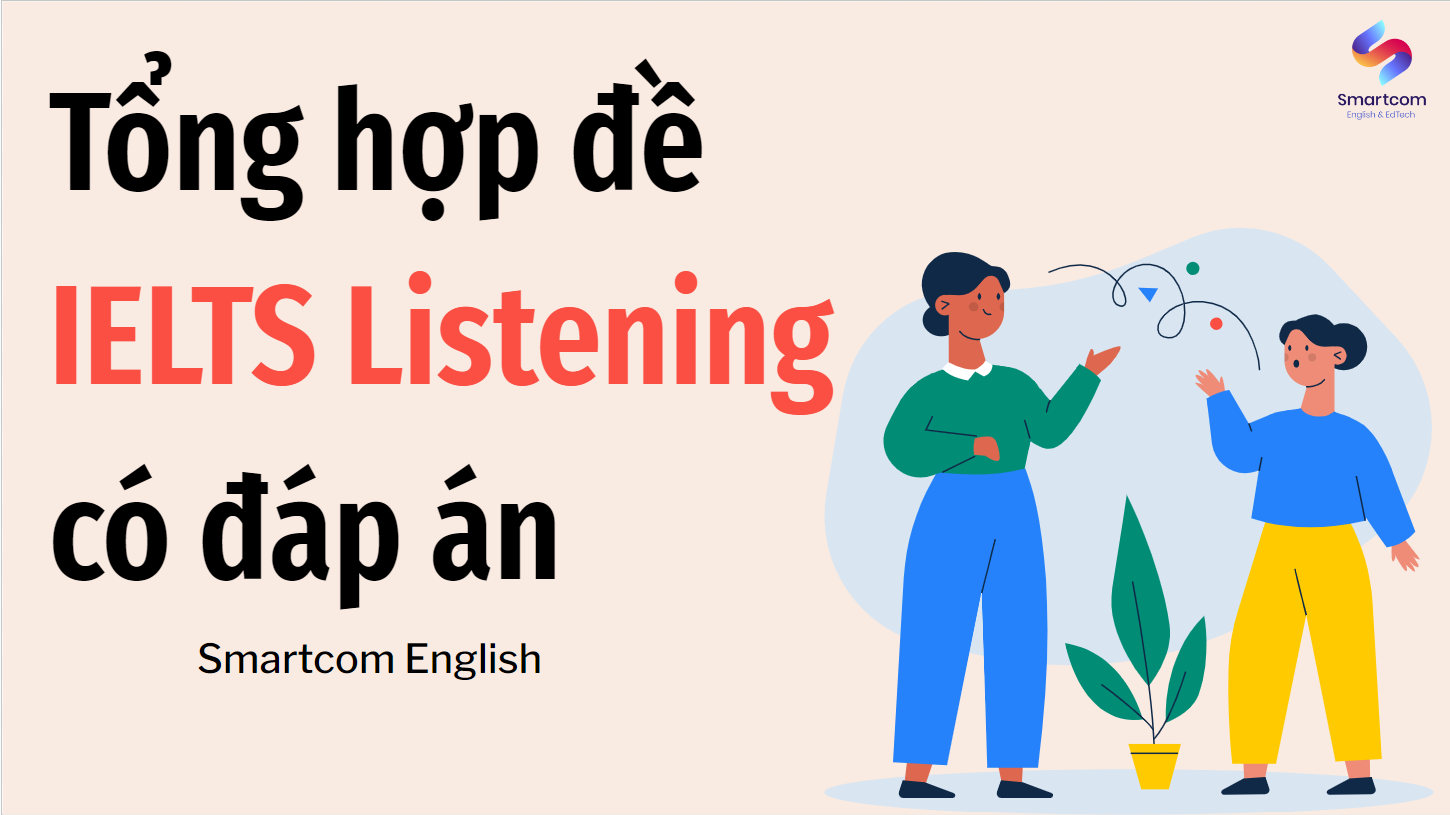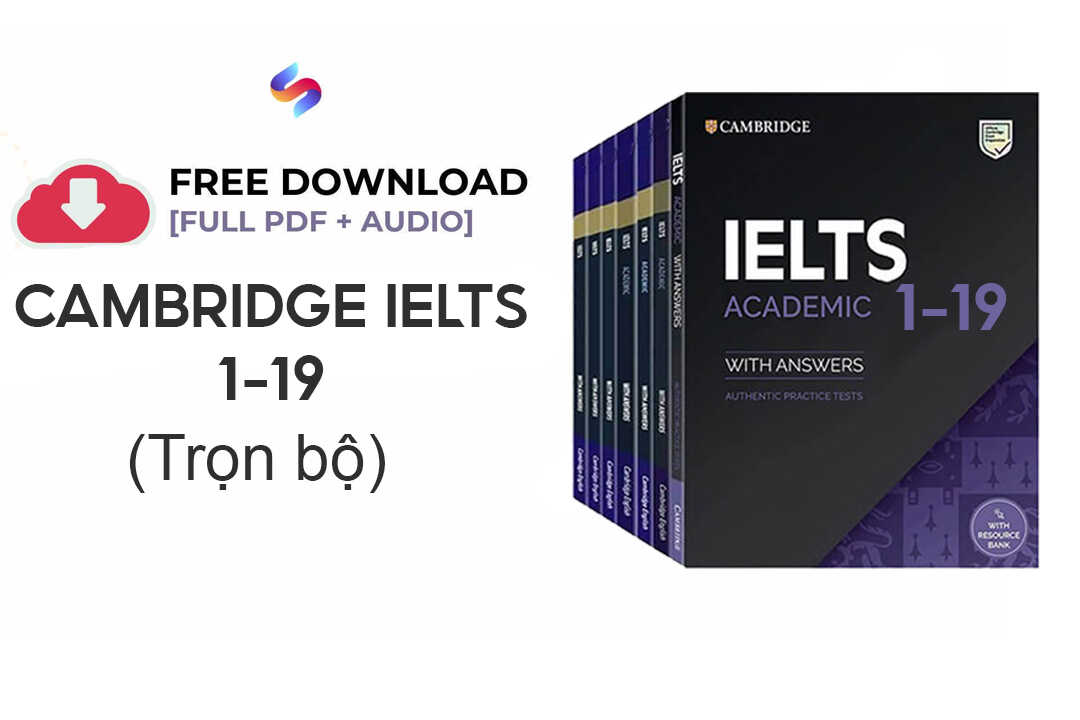Environmental problems should be solved by one international organization or each national government. Do you agree or disagree?
IDP – IELTS Computer-delivered test – October 17th 2024
Smartcom IELTS xin gửi tới các bạn bài hướng dẫn giải đề thi IELTS ngày 17/10/2024 với hình thức thi trên máy tính tại IDP Phan Bội Châu.
Dịch đề bài: Các vấn đề về môi trường nên được giải quyết bởi một tổ chức quốc tế hoặc mỗi chính phủ quốc gia. Bạn đồng ý hay không đồng ý?
Hướng dẫn chiến thuật làm bài
Bước 1: Xác định rõ yêu cầu của đề bài
Khi đọc đề IELTS writing task 2, có 2 điều mà các sĩ tử quan xác định rõ từ bước đầu tiên đó là: 1. Chủ đề; và 2. Dạng bài. Cụ thể đề bài đã cho được hiểu là: “Các vấn đề về môi trường nên được giải quyết bởi một tổ chức quốc tế hoặc mỗi chính phủ quốc gia. Bạn đồng ý hay không đồng ý?”
Như vậy, chủ đề của bài này là bàn về Vấn đề môi trường và tổ chức. Dạng câu hỏi là tranh luận và đưa ra ý kiến cá nhân.
Chú ý: Sĩ tử cần luyện IELTS kỹ lưỡng thì mới có thể viết bài luận tiếng Anh học thuật đáp ứng tốt 4 tiêu chí chấm điểm gồm Task Response (Đúng đề, đủ ý), Coherence and Cohesion (Bố cục logic & liên kết mạch lạc), Lexical Resources (Vốn từ vựng phong phú) và Grammatical Range and Accuracy (Ngữ pháp phong phú và chính xác), đồng thời viết trong phạm vi thời gian quy định chỉ là 40 phút với đủ độ dài (tối thiểu là 250 từ, nhưng tốt hơn hết hãy tập viết với độ dài từ 300 từ trở lên để lấy điểm số cao hơn).
Bước 2: Lên dàn ý bài viết
Thực chất bước này thí sinh sẽ không làm trong phòng thi, mà luyện tập lên dàn ý trong quá trình luyện thi IELTS rồi. Vào phòng thi, đọc đề là ta phải tận dụng toàn bộ 40 phút quý báu để viết, chứ không thể ngồi suy nghĩ về dàn ý nữa.
Hiện nay đề thi IELTS Writing Task 2 tập trung vào 5 dạng câu hỏi chính gồm:
- Agreeing vs Disagreeing
- Positive or Negative Development
- Discuss both views and give your opinion
- Outweighing
- Two-question essays
Mỗi dạng bài này đều có một số dàn ý tương ứng, và người học IELTS cần luyện trước các dàn ý này, để có sẵn dàn ý trong đầu. Khi vào bài thi, đối với mỗi câu hỏi cụ thể thì bạn chỉ cần thay ý tưởng và ngôn từ vào là có thể viết trọn vẹn một bài luận Task 2 một cách khá dễ dàng dựa vào dàn ý trong đầu đã luyện. Với dạng bài Agreeing – Disagreeing như đề thi đã hỏi, ta nên viết theo bố cục 5 đoạn văn như sau:
- Đoạn mở bài: Nêu lại vấn đề được đưa ra tranh luận bằng ngôn từ của riêng bạn. Sau đó nêu khái quát những quan điểm tranh luận đối lập nhau, và đưa ra quan điểm rằng bạn đồng ý hay không đồng ý với nhận định của đề bài.
- Đoạn thân bài 1: Nêu quan điểm đối lập mà bạn không ủng hộ. Hãy tập trung vào một ý chính duy nhất (chỉ phân tích một quan điểm chính), kèm theo lập luận và ví dụ cụ thể để tăng tính logic của bài viết. Chú ý: việc phân tích quan điểm đối lập này là điều cần thiết trong văn học thuật tiếng Anh, nó thể hiện bạn có cái nhìn khách quan, có cân nhắc đến các quan điểm khác nhau trước khi đưa ra quan điểm của cá nhân mình.
- Đoạn thân bài 2: Nêu quan điểm mà bạn ủng hộ. Hãy tập trung viết vào một quan điểm mà bạn thấy có sức ảnh hưởng nhất, không được viết nhiều hơn 1 quan điểm, để tránh bị trừ điểm Coherence and Cohesion. Sau đó đưa ra các lý do, cách thức hoặc phân tích sâu hơn về quan điểm đó, và đưa ra ví dụ hoặc bằng chứng cụ thể để khẳng định lý lẽ của bạn.
- Đoạn thân bài 3: Phân tích quan điểm cá nhân của bạn. Đoạn này bạn nêu rõ tại sao bạn ủng hộ quan điểm đã nêu ra ở đoạn thân bài 2, bằng cách đưa ra lý do ủng hộ, hoặc đưa ra những lý lẽ để bác bỏ hoặc phê phán quan điểm đối lập.
- Đoạn kết bài: Đoạn này bạn nhắc lại quan điểm của mình về việc ủng hộ mặt nào. Sau đó bạn nên viết thêm câu kêu gọi hành động hoặc lời khuyên tương ứng với mặt mà bạn ủng hộ.
Muốn viết được hiệu quả một bài luận tranh luận quan điểm như ở câu hỏi này, việc có bố cục bài viết là chưa đủ, mà bạn cần thêm tối thiểu hai điều nữa gồm: có kiến thức về chủ đề mà bạn viết kèm theo vốn từ vựng tiếng Anh của nó, và có vốn cấu trúc ngữ pháp ít nhất là đủ để hình thành các câu, diễn đạt trọn vẹn ý mà bạn muốn viết. Điều này đòi hỏi bạn phải nghiên cứu trong một thời gian nhất định, hoặc được đào tạo bởi giáo viên IELTS chuyên nghiệp.
Trước mắt, xin mời bạn nghiên cứu một số kiến thức về chủ đề sức ảnh hưởng của các tổ chức hoặc chính phủ tới các vấn đề môi trường. Đoạn gợi ý kiến thức và ý tưởng dưới đây được trình bày bằng tiếng Anh để vừa cung cấp kiến thức, vừa cung cấp cấu trúc câu, vừa cung cấp vốn từ tiếng Anh cho bạn.
Tư duy và kiến thức về chủ đề
Argument 1: Environmental Problems Should Be Solved by One International Organization
- Global Coordination: Environmental issues, such as climate change and biodiversity loss, are inherently global problems that cross national boundaries. An international organization can provide a unified approach to tackling these issues, ensuring that all countries collaborate and adhere to common standards.
- Resource Allocation: An international organization can effectively allocate resources and funds to areas most in need, ensuring that assistance is provided where it is most impactful. This centralized approach can prevent duplication of efforts and promote efficiency.
- Expertise and Research: International organizations can pool scientific knowledge and research from various countries, leading to better-informed policies and strategies. They can serve as hubs for data collection and analysis, which can be vital for effective decision-making.
- Enforcement of Agreements: An international body can enforce environmental treaties and agreements, holding countries accountable for their commitments. This can create a sense of obligation among nations to comply with international environmental standards.
Argument 2: Environmental Problems Should Be Solved by Each National Government
- Local Knowledge and Context: National governments are often more familiar with their specific environmental challenges and conditions. They can tailor solutions to fit their unique ecological, economic, and social contexts, making interventions more relevant and effective.
- Sovereignty and Autonomy: Countries may prefer to maintain sovereignty over their environmental policies. An international organization might impose regulations that do not align with a nation’s priorities or capabilities, potentially leading to resistance or non-compliance.
- Flexibility and Responsiveness: National governments can respond more quickly to local environmental crises, mobilizing resources and implementing policies without the bureaucratic delays that can occur in international organizations. This agility can be crucial in addressing urgent environmental issues.
- Diverse Approaches: Different countries have varying levels of development, technology, and cultural attitudes towards the environment. National governments can experiment with diverse strategies, fostering innovation that might be stifled under a uniform international approach.
Bài luận hoàn thiện
The question of whether environmental problems should be addressed by a single international organization or managed by individual national governments has become increasingly relevant in today’s interconnected world. While there are compelling arguments for both perspectives, I believe that a collaborative approach combining the efforts of international organizations and national governments would be most effective in tackling environmental issues.
On one hand, proponents of addressing environmental problems through a single international organization argue that global issues require global solutions. Environmental challenges such as climate change, deforestation, and ocean pollution do not respect national borders. An international body can facilitate coordinated efforts, ensuring that all countries adhere to common standards and collaborate effectively. For instance, organizations like the United Nations Framework Convention on Climate Change (UNFCCC) provide a platform for countries to negotiate and implement agreements aimed at reducing greenhouse gas emissions. Additionally, an international organization can allocate resources efficiently, directing funds to regions most in need and pooling scientific research to develop informed policies.
On the other hand, critics argue that national governments are better positioned to address environmental problems within their own contexts. Local knowledge and understanding of specific ecological challenges enable governments to create tailored solutions that resonate with their populations. For example, countries may face unique challenges regarding pollution, biodiversity, and resource management, necessitating localized approaches. Furthermore, national governments can respond more swiftly to environmental crises without the bureaucratic delays that often accompany international negotiations.
In my view, while an international organization can provide essential coordination and enforcement, the effectiveness of environmental solutions ultimately lies in the hands of national governments. A hybrid approach that combines global oversight with local implementation could ensure that solutions are both relevant and effective. By fostering collaboration between international bodies and national governments, we can better address the pressing environmental challenges that affect us all.
( 306 words – band 9.0) – By Smartcom IELTS Teachers
Từ vựng trong bài luận
- environmental problems /ɪnˌvaɪrənˈmɛntəl ˈprɒbləmz/ (n): vấn đề môi trường
- national governments /ˈnæʃənl ˈɡʌvənmənts/ (n): chính phủ quốc gia
- to be increasingly relevant /tə bi ɪnˈkriːsɪŋli ˈrɛləvənt/ (v): ngày càng trở nên có liên quan
- interconnected world /ˌɪntə kəˈnɛktɪd wɜːrld/ (n): thế giới liên kết
- compelling arguments /kəmˈpɛlɪŋ ˈɑːɡjʊmənts/ (n): lập luận thuyết phục
- collaborative approach /kəˈlæbəreɪtɪv əˈprəʊtʃ/ (n): phương pháp hợp tác
- to tackle /tə ˈtækəl/ (v): giải quyết
- proponents /prəˈpəʊnənts/ (n): những người ủng hộ
- deforestation /diːˌfɒrɪˈsteɪʃən/ (n): sự phá rừng
- to facilitate /tə fəˈsɪlɪteɪt/ (v): tạo điều kiện
- to adhere to /tə əˈdɪə(r) tə/ (v): tuân thủ
- to collaborate /tə kəˈlæbəreɪt/ (v): hợp tác
- to implement /tə ˈɪmplɪmənt/ (v): thực hiện
- to allocate /tə ˈæləkət/ (v): phân bổ
- to pool /tə puːl/ (v): gom lại
- better positioned /ˈbɛtər pəˈzɪʃənd/ (adj): vị trí tốt hơn
- tailored solutions /ˈteɪləd səˈluːʃənz/ (n): giải pháp phù hợp
- biodiversity /ˌbaɪəʊdaɪˈvɜːrsɪti/ (n): đa dạng sinh học
- to necessitate /tə nɪˈsɛsɪteɪt/ (v): cần thiết
- swiftly /ˈswɪftli/ (adv): một cách nhanh chóng
- bureaucratic delays /ˌbjʊərəˈkrætɪk dɪˈleɪz/ (n): sự chậm trễ hành chính
- to accompany /tə əˈkʌmpəni/ (v): đi kèm
- enforcement /ɪnˈfɔːrsmənt/ (n): sự thi hành
- hybrid approach /ˈhaɪbrɪd əˈprəʊtʃ/ (n): phương pháp kết hợp
- oversight /ˈoʊvərsaɪt/ (n): sự giám sát
- implementation /ˌɪmplɪmɛnˈteɪʃən/ (n): sự thực hiện
- to foster /tə ˈfɒstə/ (v): nuôi dưỡng
- pressing environmental challenges /ˈprɛsɪŋ ɪnˌvaɪrənˈmɛntəl ˈtʃælɪndʒɪz/ (n): những thách thức môi trường cấp bách
Trên đây là phân tích đề bài, dàn ý chi tiết và bài giải đề thi IELTS Writing ngày 17/10/2024 hình thức thi trên máy tính tại IDP.

![[PDF + Audio] Tải Sách IELTS Cambridge 19 (Kèm đáp án)](https://smartcom.vn/blog/wp-content/uploads/2024/06/ielts-cambridge-19_optimized.png)





![[Download] Ebook: English Collocations in Use Advanced (PDF)](https://smartcom.vn/blog/wp-content/uploads/2024/10/english-collocation-in-use-1.jpg)





![[Download] Bộ sách “English Phrasal Verbs in Use” của Cambridge](https://smartcom.vn/blog/wp-content/uploads/2024/10/english-phrasal-verbs-in-use.png)
![[Download] Ebook: Giải đề IELTS Writing CAMBRIDGE 19 (PDF)](https://smartcom.vn/blog/wp-content/uploads/2024/10/giai-de-cam-19.jpg)